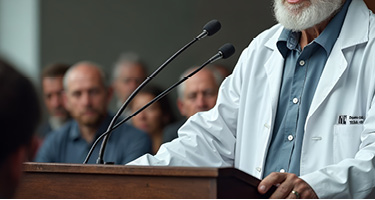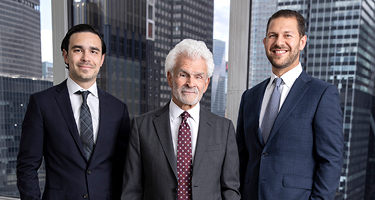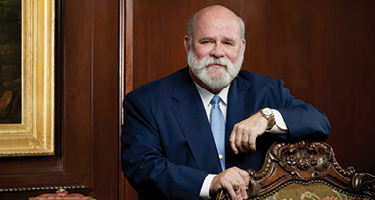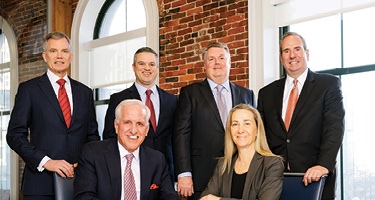How have cars changed the world? They create significant advantages, but the adverse outcomes are impressive as well. According to IIHS data, 35.000 Americans were killed in 2015 in car accidents, of which 2.939 occurred in Florida.
Car accidents are one of the world's major calamities regarding the death of people, and 94% of the deaths are caused by human error, according to NHTSA. In 2015, the costs related to deaths, injuries, and property damage resulting from motor-vehicle accidents were estimated to $412.1 billion.
Can Self-Driving Cars Be the Solution for Improved Road Safety?
According to the U.S. Department of Transportation:
"Self-driving vehicles are those in which operation of the vehicle occurs without direct driver input to control the steering, acceleration, and braking and are designed so that the driver is not expected to monitor the roadway while operating in self-driving mode constantly."
Therefore, this vehicle can work under any conditions, regardless of weather or possible restrictions in the infrastructure or the surroundings, without the intervention of the person in the car.
What does this mean?
The technology is on or in the car. That car relies on advanced sensors, radars, lidars, and other technologies in conjunction with mapping, to navigate.
In comparison, advanced driver assistance system (ADAs) include technologies that make a car capable of self-driving in some moments, but the driver can take over when needed. Some examples are technologies for collision avoidance, automated parking, and cruise control. Cars that have partial automation are not AVs (autonomous vehicles).
Technology developers and automakers estimate that AVs will be available to the public as early as 2018-2020.
Why Are Self-Driving Cars Safer?
Dashcam footage from Tesla cars impressively presents the efficiency of the Autopilot feature in predicting or avoiding accidents. According to Elon Musk, Tesla's founder, the company has laid the foundations for autonomous cars operating at a safety level "at least twice that of a person, maybe better."
Deaths and injuries from auto accidents will decrease substantially when human errors are eliminated from the driving act. Drunk driving, speeding, distractions, such as talking to other passengers, adjusting the car audio, eating/drinking, or using the phone, will no longer be problems.
The U.S. consulting firm, McKinsey & Company, analyzed the impact of driverless cars on the percentage of fatal accidents. It concluded that, in a few decades of use, AVs and ADAs could reduce accidents by up to 90% and would potentially save about $190 billion.
Driver-assistance systems are already making cars safer; therefore, it seems realistic that autonomous cars will prove to be safer choices overall.
Why Are Self-Driving Cars Dangerous?
Although they still have to overcome significant problems, self-driving cars appear to be safer than human-driven vehicles. However, the first self-driving fatalities gave rise to questions about the safety of the car's Autopilot system in crashes.
The fatal crashes also cast doubt on whether AVs, in general, can consistently make split-second, life-or-death driving decisions on the highway.
Autonomous Vehicles Involved in Accidents
The first U.S. AV fatal accident took place in northern Florida on May 7, when a Tesla Model S could not avoid a truck that was making a left turn in front of it.
Tesla defended its machine, saying that the Autopilot system was not at fault and that the accident involved a technical failure in the automated braking system.
Another Tesla fatal accident happened in China in January 2016. The victim was driving on the highway when his car hit a street sweeper truck at highway speed. The Autopilot was engaged, and the driver did not use the brakes.
In both accidents, the drivers were operating the cars without holding the wheel, which is against the agreement they had with Tesla.
Google cars have also been involved in more than a dozen accidents. The only at-fault accident happened after the AV had merged into the far right lane to turn, but its path was blocked by sandbags around a storm drain. While attempting to navigate around the sandbag, the car hit a public transit bus. No injuries were reported.
It could be concluded that in an ideal world, the safest conditions for autonomous vehicles would be those where every single vehicle on the road is autonomous. And obviously, that's not realistic.
Automated Vehicles Problems That Need Solutions
AVs use computer vision-based detection system, and some researchers believe that machine learning is not a straightforward process, making it unsure that self-driving cars will operate safely. The problem is that engineers don't always know how to write the requirements needed so that machines will run correctly.
That is why, currently, it is hard to program and test these vehicles for all the scenarios they could experience when encountering pedestrian hazards or small animals.
The weather is another problem for autonomous cars. Poor weather affects the vision systems, rendering cars inoperable. In the future, more sensors have to be embedded in the environment and the car.
Moreover, a report from research firm RAND Corporation found that self-driving cars can't be tested enough hours to determine their safety. The report says AVs must be tested "hundreds of millions of miles and sometimes hundreds of billions of miles" to obtain enough information to compare their safety to that of human-driven vehicles.
Other problems regard data protection, cyber security, and the necessary infrastructure changes.
States Where Self-Driving Cars Are Legal
Self-driving cars are not illegal; they are just not regulated in the majority of the states. Regulation must define categorically under which infrastructure conditions such vehicles can be operated.
The U.S. Department of Transportation has drafted a series of rules, guidelines, and policy proposals for self-driving cars. Thus, the agency has begun the task of determining the safety standards for the evolving technology.
Only a few states, California, Florida, Hawaii, Nevada, Michigan, Washington, D.C., have currently passed laws concerning how self-driving cars are tested and sold. In the rest of the states, self-driving cars may be operated, but regulators have yet to come up with rules.
Florida law regarding self-driving cars does not contain specific requirements; it just reinforces the idea that the testing and operating of autonomous technology is not prohibited or expressly regulated.
Conclusion: Liability in Situations Involving Self-Driving Vehicles
Accidents involving AVs raise important questions regarding liability:
- Who is responsible when an AV gets into an accident: the driver, the technology developer, the automaker?
- Who is responsible for an accident between a self-driving car and a human-driven car?

































